The Importance of Shredding and Recycling Paper
In today's fast-paced world, the significance of shredding and recycling paper cannot be overstated. With climate change knocking on our doors and data breaches becoming alarmingly common, understanding these practices is essential for both individuals and businesses alike. Imagine a world where waste is minimized, resources are conserved, and our personal information is safeguarded. That's the promise of effective paper shredding and recycling. Not only do these practices contribute to a healthier environment, but they also protect our sensitive information from falling into the wrong hands. So, let's dive deeper into why shredding and recycling paper should be a priority in our daily lives.
Recycling paper is like giving Mother Nature a much-needed hug. When we recycle, we significantly reduce the amount of waste that ends up in landfills, which is crucial for preserving our planet. Did you know that recycling just one ton of paper can save more than 17 trees? That's right! By choosing to recycle, we conserve natural resources and help maintain biodiversity. Furthermore, recycling paper lowers greenhouse gas emissions, which is vital in the fight against global warming. By understanding these advantages, we can inspire more individuals and businesses to adopt recycling practices. Imagine if everyone took a few simple steps—together, we could make a monumental impact!
While recycling is essential for the environment, shredding paper is equally important for protecting our personal and corporate information. In a world where identity theft is rampant, proper shredding can be your first line of defense. Whether you’re tossing out old bank statements, medical records, or confidential business documents, shredding ensures that sensitive information doesn’t fall into the wrong hands. Think of shredding as a digital lock on your personal data. Without it, you’re leaving your information vulnerable to thieves who could wreak havoc on your life. So, how do we choose the right shredder to keep our information safe?
When it comes to shredders, there are various types available, each offering different levels of security and efficiency. Here’s a quick rundown:
- Strip-Cut Shredders: These are the most basic type, cutting paper into long strips. While they are fast and efficient, they offer the least security. They're perfect for non-confidential documents.
- Cross-Cut Shredders: A step up from strip-cut shredders, these machines cut paper into small pieces, making it much harder for anyone to reconstruct the original document.
- Micro-Cut Shredders: For those who demand the highest level of security, micro-cut shredders cut paper into tiny particles. They are ideal for sensitive documents and provide peace of mind for users concerned about data breaches.
When selecting a shredder, consider your specific needs. Ask yourself questions like: How much paper do you need to shred? What level of security do you require? Understanding these factors will guide you in making the right choice. For instance, if you run a small business that handles sensitive client information, investing in a micro-cut shredder may be worth it. On the other hand, if you only need to dispose of old receipts, a strip-cut shredder might suffice. Making an informed decision can save you time, money, and a lot of headaches down the line.
Recycling paper effectively isn't just about tossing it into a bin; it involves knowing what can and cannot be recycled. Proper sorting and preparation of paper products maximize recycling efficiency and minimize contamination. For instance, did you know that greasy pizza boxes can’t be recycled? It's essential to familiarize yourself with your local recycling guidelines to ensure that your efforts are not in vain.
Preparing paper for recycling is a straightforward process, but it requires attention to detail. Before you toss your paper into the recycling bin, remove any non-paper materials, such as plastic windows from envelopes and staples. This simple step ensures a higher quality of recycled paper products, which ultimately benefits the environment. Think of it as giving your paper a spa treatment before sending it off to be reborn as something new!
Many communities offer recycling programs that simplify the process for residents. Participating in these local initiatives not only enhances recycling efforts but also fosters community engagement and environmental responsibility. By joining forces with your neighbors, you can create a more significant impact. Plus, many programs provide educational resources that can help you learn more about sustainability practices. So, why not check out what your community has to offer? Together, we can make a difference!
Q: What types of paper can be recycled?
A: Most paper products, including newspapers, office paper, and cardboard, can be recycled. However, items like greasy pizza boxes and paper towels typically cannot be recycled.
Q: How often should I shred documents?
A: It's best to shred documents regularly, especially those containing sensitive information. Consider shredding at least once a month or whenever you accumulate a stack of papers you no longer need.
Q: Can I recycle shredded paper?
A: Yes, shredded paper can be recycled, but it’s best to check with your local recycling program first, as some facilities have specific guidelines regarding shredded materials.
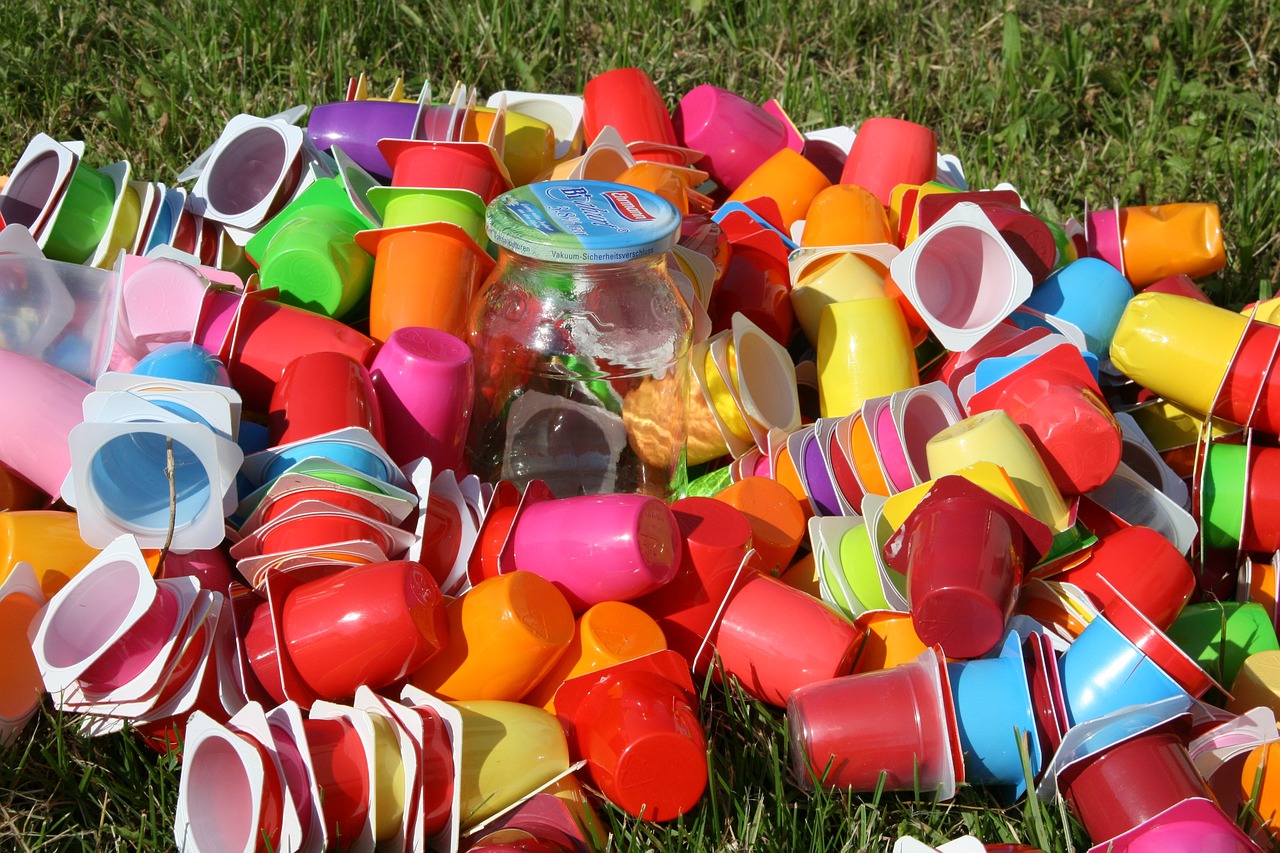
Environmental Benefits of Recycling Paper
Recycling paper is not just a trendy thing to do; it's a vital practice that plays a significant role in preserving our planet. Did you know that recycling just one ton of paper can save approximately 17 trees? That's right! By recycling, we help conserve our natural resources, allowing forests to thrive and wildlife to flourish. The environmental benefits extend beyond just saving trees; they encompass a wide range of positive impacts on our ecosystem.
One of the most significant advantages of recycling paper is the reduction of waste in landfills. When paper is thrown away instead of recycled, it can take years to decompose. In fact, paper products can take up to 30 years to break down in a landfill! By recycling paper, we can significantly decrease the amount of waste that ends up in these sites, which not only conserves space but also reduces the harmful emissions produced during decomposition.
Moreover, recycling paper helps to lower greenhouse gas emissions. When paper is produced from virgin materials, it requires energy-intensive processes that contribute to carbon dioxide emissions. However, when we recycle paper, we use less energy, which in turn reduces our carbon footprint. According to the Environmental Protection Agency (EPA), recycling one ton of paper can save over 4,000 kilowatts of electricity, which is enough energy to power an average home for six months!
In addition to conserving energy and reducing waste, recycling paper also minimizes water pollution. The production of paper from raw materials involves significant amounts of water, and this process can lead to the contamination of local waterways. By recycling, we reduce the demand for new paper production, which means less water is needed and fewer pollutants are released into our streams and rivers. This is a win-win for both the environment and our health!
To further illustrate the impact of recycling paper, here’s a quick comparison:
| Impact | Recycling Paper | Producing New Paper |
|---|---|---|
| Trees Saved | 17 trees per ton | Requires cutting down trees |
| Energy Used | 4,000 kilowatts saved per ton | High energy consumption |
| Water Usage | Less water needed | High water consumption |
| Greenhouse Gas Emissions | Lower emissions | Higher emissions |
As you can see, the environmental benefits of recycling paper are extensive and impactful. By making a conscious effort to recycle, we can all contribute to a healthier planet. Whether it's at home, in the office, or within our communities, every little bit counts. So, why not start today? Your actions can lead to a more sustainable future for generations to come!
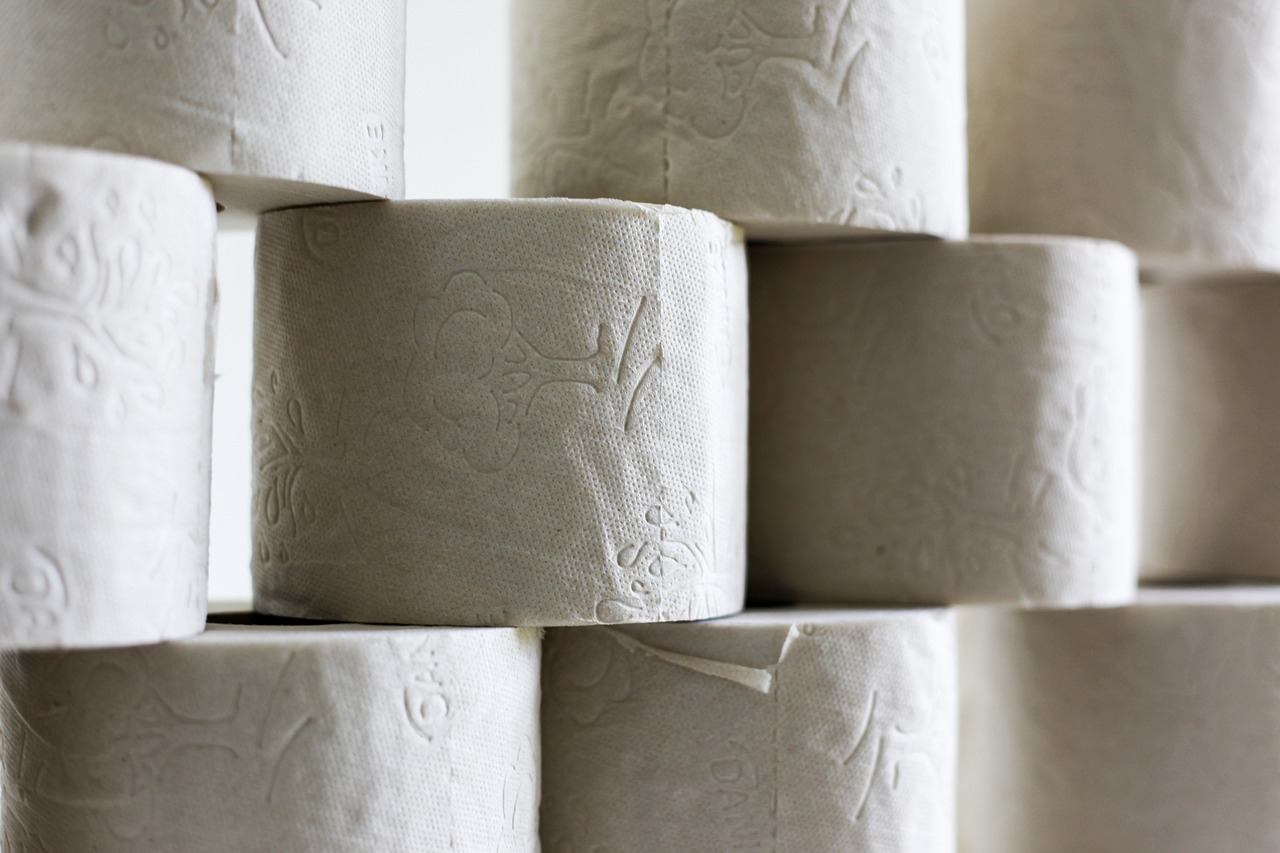
Shredding for Security
In today's digital age, where information is as valuable as gold, protecting your sensitive data has never been more critical. Shredding paper is not merely a chore; it’s a vital step in safeguarding your personal and corporate information. Imagine tossing your old documents into the trash without a second thought—it's like leaving the front door wide open for intruders. Whether it's bank statements, tax returns, or confidential business contracts, these documents can contain sensitive information that, if fallen into the wrong hands, could lead to identity theft or corporate espionage.
So, why is shredding so essential? First and foremost, it prevents unauthorized access to your information. Think of shredding as a fortress around your sensitive data. When you shred documents, you’re not just cutting them into pieces; you're effectively rendering that information useless to anyone who might want to exploit it. This practice is especially crucial for businesses, where a data breach can lead to devastating financial consequences and loss of trust.
To illustrate the importance of shredding, consider the different types of shredders available in the market. Each type serves a unique purpose and offers varying levels of security. Here’s a brief overview:
| Type of Shredder | Security Level | Best For |
|---|---|---|
| Strip-Cut Shredder | Low | Non-confidential documents |
| Cross-Cut Shredder | Medium | General office use |
| Micro-Cut Shredder | High | Highly sensitive documents |
As you can see, the type of shredder you choose can make a significant difference in the level of security you achieve. Strip-cut shredders are the most basic, slicing documents into long strips. While they are quick and easy to use, they offer the least protection, making them suitable only for non-confidential papers. On the other hand, micro-cut shredders take security to a whole new level by cutting paper into tiny particles, which are almost impossible to reconstruct. This level of security is ideal for anyone concerned about data breaches and privacy issues.
When selecting a shredder, consider your specific needs. Ask yourself the following questions: How much paper do you need to shred regularly? What level of security do you require? Understanding these factors can guide you to the right choice. For instance, if you run a small business dealing with sensitive client information, investing in a micro-cut shredder could save you from potential legal headaches down the line.
In conclusion, shredding is not just a matter of convenience; it’s a crucial practice for anyone who values their privacy and security. By incorporating shredding into your routine, you’re taking proactive steps to protect your information from prying eyes. Remember, it’s always better to be safe than sorry!
- How often should I shred documents? It's advisable to shred documents regularly, especially those that contain sensitive information. A good rule of thumb is to shred documents as soon as they are no longer needed.
- Can I recycle shredded paper? Yes, shredded paper can be recycled, but it’s best to check with your local recycling program to ensure they accept it.
- What types of items can I shred? You can shred paper documents, credit cards, CDs, and other materials that contain personal information.
- Is it safe to use a home shredder for business documents? While home shredders can be used for business documents, ensure you choose one with adequate security features, especially for sensitive information.
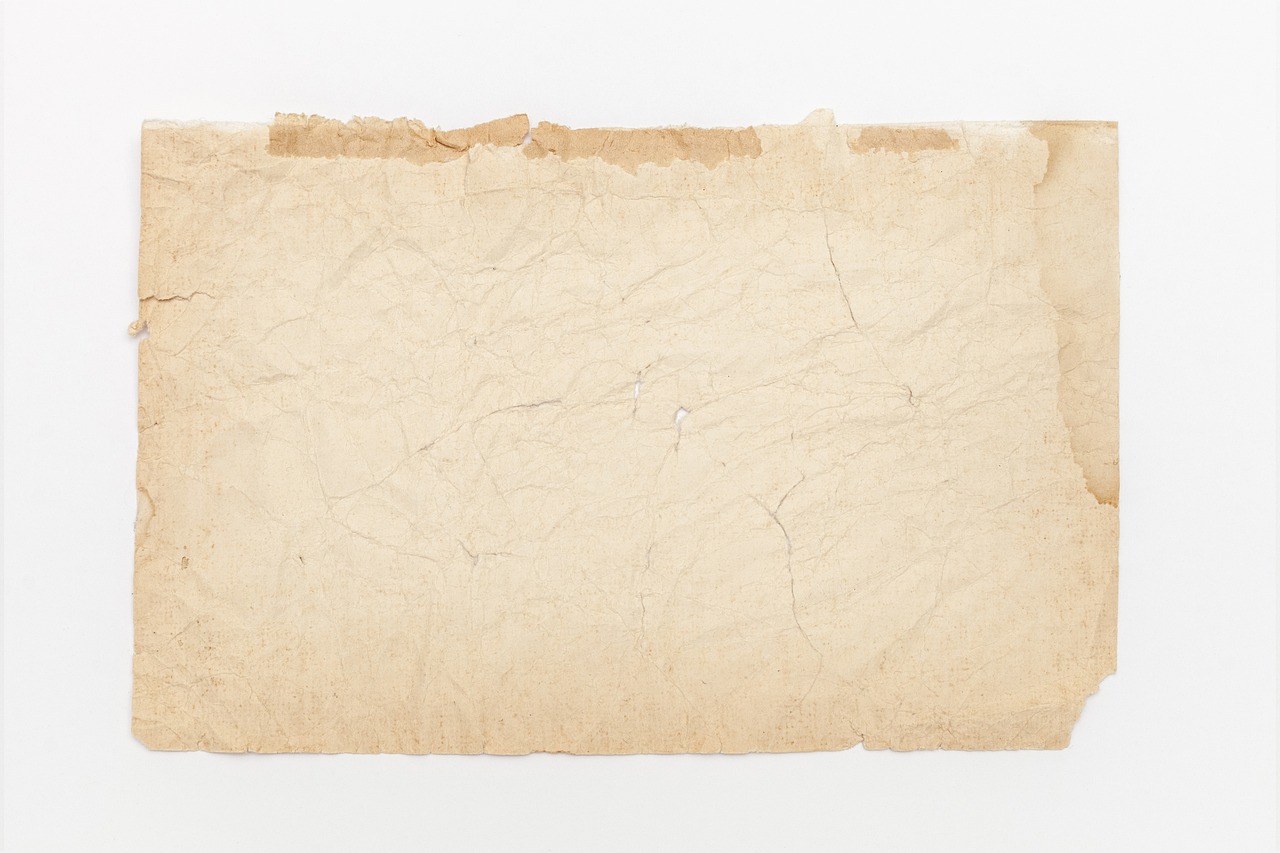
Types of Shredders
When it comes to shredding paper, not all shredders are created equal. Understanding the different types of shredders available can help you make an informed decision based on your specific needs. Whether you’re looking to protect sensitive information or simply declutter your workspace, choosing the right shredder is essential. There are three primary types of shredders: strip-cut, cross-cut, and micro-cut. Each of these shredders serves a unique purpose and offers varying levels of security.
Strip-cut shredders are the most basic and commonly used type. They work by slicing paper into long strips, which makes them fast and efficient for shredding large volumes of non-confidential documents. However, while they are quick, they provide the least amount of security. This means that if you’re disposing of sensitive information, strip-cut shredders might not be the best option. Imagine trying to keep a secret by just tearing a piece of paper in half—it's still recognizable, right? That's the downside of strip-cut shredders!
Next up, we have cross-cut shredders. These shredders take security a step further by cutting the paper into small squares rather than strips. This added layer of security makes it much more difficult for anyone to piece together the shredded documents. If you’re looking for a balance between efficiency and security, a cross-cut shredder is a solid choice. It’s like turning a puzzle into confetti—much harder to reconstruct!
Finally, the king of shredders is the micro-cut shredder. If you’re serious about data security, this is the shredder for you. Micro-cut shredders chop paper into tiny particles, making it virtually impossible for anyone to recover any information from the shredded material. This type of shredder is ideal for individuals and businesses that handle sensitive documents, such as financial records or personal information. Think of it as turning your documents into dust—there’s no way anyone can piece that back together!
In summary, the choice of shredder largely depends on your specific needs:
| Type of Shredder | Security Level | Best For |
|---|---|---|
| Strip-Cut | Low | Non-confidential documents |
| Cross-Cut | Medium | General office use |
| Micro-Cut | High | Sensitive information |
By understanding the differences between these types of shredders, you can choose the one that best fits your security needs and paper disposal habits. Remember, the right shredder not only helps you protect your information but also contributes to a more sustainable environment by ensuring that your paper waste is properly managed.
- What is the best type of shredder for home use? For most home users, a cross-cut shredder strikes a good balance between security and efficiency.
- How often should I shred documents? It's a good practice to shred documents that contain personal information as soon as you no longer need them.
- Can I shred cardboard or other materials? Most shredders are designed for paper only. Check your shredder’s specifications for guidance on other materials.

Strip-Cut Shredders
When it comes to shredding paper, are the most basic and widely recognized type available on the market. These machines work by slicing paper into long, thin strips, making the shredding process relatively quick and straightforward. However, while their speed may be appealing, it's essential to consider the level of security they provide. Strip-cut shredders are generally suitable for non-confidential documents, such as outdated newsletters or junk mail, where the risk of sensitive information being exposed is minimal.
One of the key advantages of strip-cut shredders is their affordability. They are often the most cost-effective option for individuals and small businesses that do not deal with highly sensitive information. The simplicity of their design means they require less maintenance and are easier to operate, making them a popular choice for everyday shredding needs.
However, it's important to recognize the limitations of strip-cut shredders. Since they cut paper into long strips, it is relatively easy for someone with a little determination to piece together shredded documents. This vulnerability makes them less suitable for protecting sensitive data, such as personal identification information, financial records, or confidential business documents. For those who prioritize security, investing in a more advanced shredder may be a wise choice.
To give you a clearer picture of the pros and cons of strip-cut shredders, here’s a quick comparison:
| Pros | Cons |
|---|---|
| Cost-effective | Low security level |
| Fast shredding speed | Easy to reconstruct documents |
| Simple operation | Not suitable for sensitive information |
In conclusion, while strip-cut shredders offer a practical solution for everyday shredding tasks, they fall short when it comes to safeguarding sensitive information. If your shredding needs involve confidential documents, it may be worth considering upgrading to a more secure option, such as cross-cut or micro-cut shredders, which provide enhanced protection and peace of mind.
- What is the main disadvantage of strip-cut shredders? The primary disadvantage is their low security level, as the long strips can be relatively easy to piece back together.
- Are strip-cut shredders suitable for home use? Yes, they are ideal for home use if you mainly shred non-confidential documents.
- How do I maintain a strip-cut shredder? Regularly empty the waste bin and keep the blades lubricated to ensure optimal performance.

Micro-Cut Shredders
When it comes to safeguarding your sensitive information, are the champions of the shredding world. These devices take security to a whole new level by transforming your confidential documents into tiny, confetti-like particles. Imagine throwing a piece of paper into a micro-cut shredder and watching it disappear into a pile of minuscule pieces that are nearly impossible to reconstruct. This level of destruction is crucial for anyone concerned about identity theft or data breaches, whether you’re a business handling client information or an individual with personal documents.
Micro-cut shredders are particularly beneficial for those who deal with highly sensitive materials, such as financial records, legal documents, or any paperwork containing personal identification information. The peace of mind they offer is invaluable, knowing that your sensitive data is not just shredded but obliterated. This level of security is essential in a world where data breaches are becoming increasingly common, and a single piece of unshredded paper can lead to a significant compromise.
While micro-cut shredders may come with a higher price tag compared to their strip-cut and cross-cut counterparts, the investment is worth it for the added security they provide. It’s like choosing a high-security vault over a simple lockbox for your valuables. Additionally, many modern micro-cut shredders come equipped with features that enhance their usability:
- Noise Reduction: Many models operate quietly, making them ideal for office environments.
- Continuous Run Time: Some shredders can run for extended periods without overheating, allowing you to shred larger batches of documents.
- Safety Features: Many micro-cut shredders include safety features such as automatic shut-off and reverse functions to prevent jams.
In conclusion, if you’re looking for the ultimate in document security, a micro-cut shredder is the way to go. They not only provide unparalleled protection for your sensitive information but also contribute to a more secure environment for everyone. So, before you toss that old bank statement or tax document in the recycling bin, consider investing in a micro-cut shredder. Your future self will thank you!
Q1: How does a micro-cut shredder differ from a cross-cut shredder?
A micro-cut shredder cuts paper into much smaller pieces compared to a cross-cut shredder, making it more secure and harder to reconstruct.
Q2: Can I shred credit cards with a micro-cut shredder?
Many micro-cut shredders are designed to handle credit cards and CDs, but it's essential to check the manufacturer's specifications.
Q3: How often should I shred documents?
It's advisable to shred documents that contain sensitive information as soon as they are no longer needed to minimize the risk of identity theft.
Q4: Are micro-cut shredders more expensive than other types?
Yes, micro-cut shredders typically come at a higher price point due to their advanced security features, but they offer significant peace of mind.
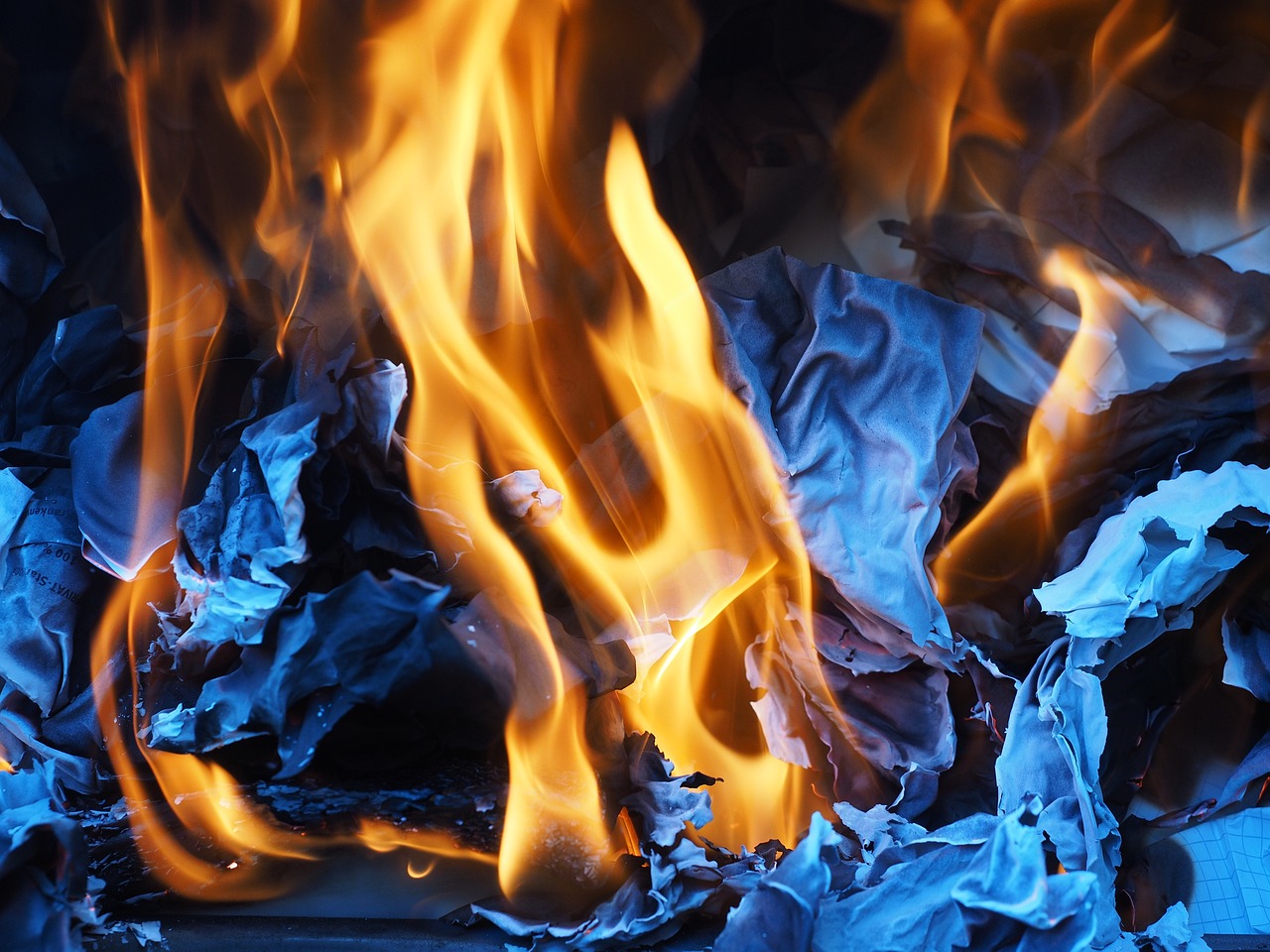
Choosing the Right Shredder
When it comes to selecting the right shredder, it’s essential to consider a few key factors that will ultimately guide your decision. Think of it like choosing the right tool for a job; using a hammer to hang a picture is fine, but if you're building a house, you’ll need a full toolbox. Similarly, the type of shredder you choose should align with your specific needs, whether it’s for personal use at home or for a bustling office environment.
First and foremost, assess the volume of paper you plan to shred. If you’re just clearing out a few old documents here and there, a basic strip-cut shredder might suffice. However, if you find yourself inundated with heaps of paperwork on a regular basis, you may want to invest in a more robust model, like a cross-cut or micro-cut shredder. These options are not only more secure but also more efficient for larger quantities of paper.
Another crucial aspect to consider is the level of security you require. For instance, if you’re dealing with sensitive information—think financial records, medical documents, or anything that could lead to identity theft—a micro-cut shredder is your best bet. It turns paper into confetti, making it virtually impossible for anyone to reconstruct the original document. On the other hand, if your shredding needs are less critical, a strip-cut shredder might do the trick, albeit with less security.
Here are some factors to keep in mind when choosing your shredder:
- Security Level: Determine how sensitive your documents are.
- Shredding Capacity: Consider how many sheets you need to shred at once.
- Run Time: Check how long the shredder can operate before needing a cool-down period.
- Additional Features: Look for features like jam-proof technology, safety locks, or even the ability to shred credit cards and CDs.
Finally, think about the shredder's maintenance and durability. A quality shredder should last you several years, so consider warranties and customer reviews before making a purchase. Investing a bit more upfront can save you from the headaches of frequent replacements. In the end, the right shredder will not only keep your information safe but also make your life easier by helping you manage paper clutter effectively.
1. How often should I shred documents?
It's recommended to shred documents that contain sensitive information as soon as they are no longer needed. Regular shredding helps prevent identity theft.
2. Can I shred other materials besides paper?
Many shredders can handle credit cards, CDs, and staples, but always check the manufacturer's guidelines to avoid damaging the machine.
3. Is it better to recycle shredded paper?
Yes! Shredded paper can be recycled, but it's important to check with your local recycling program to see if they accept shredded materials, as they can be more challenging to process.

How to Recycle Paper Effectively
Recycling paper might seem like a straightforward task, but there’s a bit more to it than just tossing it into a bin. To truly make a difference, it's essential to understand what can and cannot be recycled, as well as the proper methods to prepare your paper products. This not only maximizes recycling efficiency but also minimizes contamination, ensuring that the materials can be repurposed effectively. Think of recycling as a team sport; every player (or piece of paper) has a role to play in achieving the goal of a cleaner environment.
First off, let’s talk about sorting. When you’re ready to recycle, take a moment to separate your paper into different categories. This can include:
- Clean Paper: This includes items like printer paper, notebooks, and envelopes without plastic windows.
- Cardboard: Flatten boxes to save space and make them easier to handle.
- Mixed Paper: This can include magazines, junk mail, and newspapers.
Next, preparation is key. Removing non-paper materials is crucial. For instance, plastic windows from envelopes, staples, and tape can contaminate the recycling process. By taking the time to prepare your paper correctly, you’re ensuring a higher quality of recycled paper products. Imagine trying to bake a cake with spoiled ingredients; the end result will certainly be less than desirable, right? The same principle applies here!
Another important aspect is to stay informed about your local recycling guidelines. Different communities have varying rules regarding what can be recycled. Some may accept items like pizza boxes, while others do not. It’s like learning the rules of a new game—knowing what’s acceptable can help you play your part effectively. Many local governments provide resources online or even have dedicated recycling centers where you can get more information.
Lastly, consider participating in community recycling programs. Many neighborhoods offer initiatives that simplify the recycling process, making it easier for residents to contribute. Not only does this foster a sense of community, but it also promotes environmental responsibility. By joining forces with your neighbors, you can amplify your impact. After all, a chain is only as strong as its weakest link, and together, you can create a robust recycling culture in your area.
In conclusion, recycling paper effectively is about more than just tossing it in a bin. It requires attention to detail, knowledge of local guidelines, and a commitment to preparing materials correctly. By doing so, you’re not just helping the planet; you’re also setting a fantastic example for those around you. So grab that stack of old newspapers, sort them out, and let’s make a difference together!
Q: What types of paper can be recycled?
A: Most types of paper can be recycled, including printer paper, newspapers, magazines, and cardboard. However, items like greasy pizza boxes and paper towels typically cannot be recycled.
Q: Do I need to remove staples and tape from paper before recycling?
A: Yes, it's best to remove staples and tape as they can contaminate the recycling stream. However, some recycling facilities can handle small amounts of these materials.
Q: Can I recycle shredded paper?
A: It depends on your local recycling program. Some facilities accept shredded paper, while others do not due to the difficulty in processing it. Always check with your local recycling guidelines.
Q: How can I find out more about my community’s recycling program?
A: You can visit your local government’s website or contact your waste management department for detailed information on recycling rules and programs in your area.

Preparing Paper for Recycling
Preparing paper for recycling is a crucial step that many people overlook. It’s not just about tossing your old papers into a bin and calling it a day! If you want to maximize the benefits of recycling, you need to ensure that the paper you’re recycling is clean and free from contaminants. Think of it as preparing a delicious meal; you wouldn’t want to cook with spoiled ingredients, right? Similarly, the quality of recycled paper depends on the quality of the materials collected.
First and foremost, it’s essential to remove non-paper materials from your recycling pile. This includes items like plastic windows from envelopes, tape, and staples. These contaminants can disrupt the recycling process and lead to lower-quality recycled products. For instance, if you’ve got an envelope with a plastic window, it’s best to either remove that window or simply toss the entire envelope into your regular trash. This ensures that the paper being recycled is as pure as possible.
Moreover, it’s important to consider the condition of the paper. Are your documents stained with food or other substances? If so, they may not be suitable for recycling. Just like you wouldn’t serve a dish that looks unappetizing, recycling facilities also prefer clean, dry paper. Wet or soiled paper can cause problems during the recycling process, leading to contamination and wasted resources.
Another important aspect to keep in mind is the sorting of paper types. Not all paper is created equal! For instance, glossy paper, such as magazines or promotional materials, often cannot be recycled in the same way as standard office paper. Therefore, it’s beneficial to sort your paper into categories before recycling. Here’s a quick rundown of what you can typically recycle:
- Office Paper: This includes printer paper, notebooks, and any other standard paper products.
- Cardboard: Flattened cardboard boxes can be recycled, but remember to remove any plastic or foam inserts.
- Newspapers: They are great candidates for recycling, but ensure they are dry and free from contaminants.
- Magazines: Check with your local recycling guidelines, as some facilities may not accept glossy paper.
To make the recycling process even smoother, consider setting up a dedicated recycling station at home. This could be as simple as having a separate bin for paper products, making it easier to sort and prepare materials for recycling. By keeping your recycling organized, you not only save time but also contribute to a more efficient recycling process. In the end, taking these small steps makes a significant difference in the environmental impact of your recycling efforts.
Q: Can I recycle paper with staples or paper clips?
A: While some recycling facilities can handle small amounts of staples, it’s best to remove them whenever possible. Paper clips should also be removed, as they can interfere with the recycling process.
Q: Is shredded paper recyclable?
A: Yes, shredded paper can be recycled, but it’s crucial to check with your local recycling program. Some facilities may not accept shredded paper due to its small size, which can complicate the recycling process.
Q: Can I recycle colored paper?
A: Yes! Colored paper is recyclable, but be sure to check with your local guidelines, as some facilities may have specific requirements.
Q: What should I do with paper that is too dirty to recycle?
A: If paper is stained or contaminated with food, it’s best to dispose of it in the trash. Contaminated paper can spoil the recycling process and affect the quality of recycled materials.
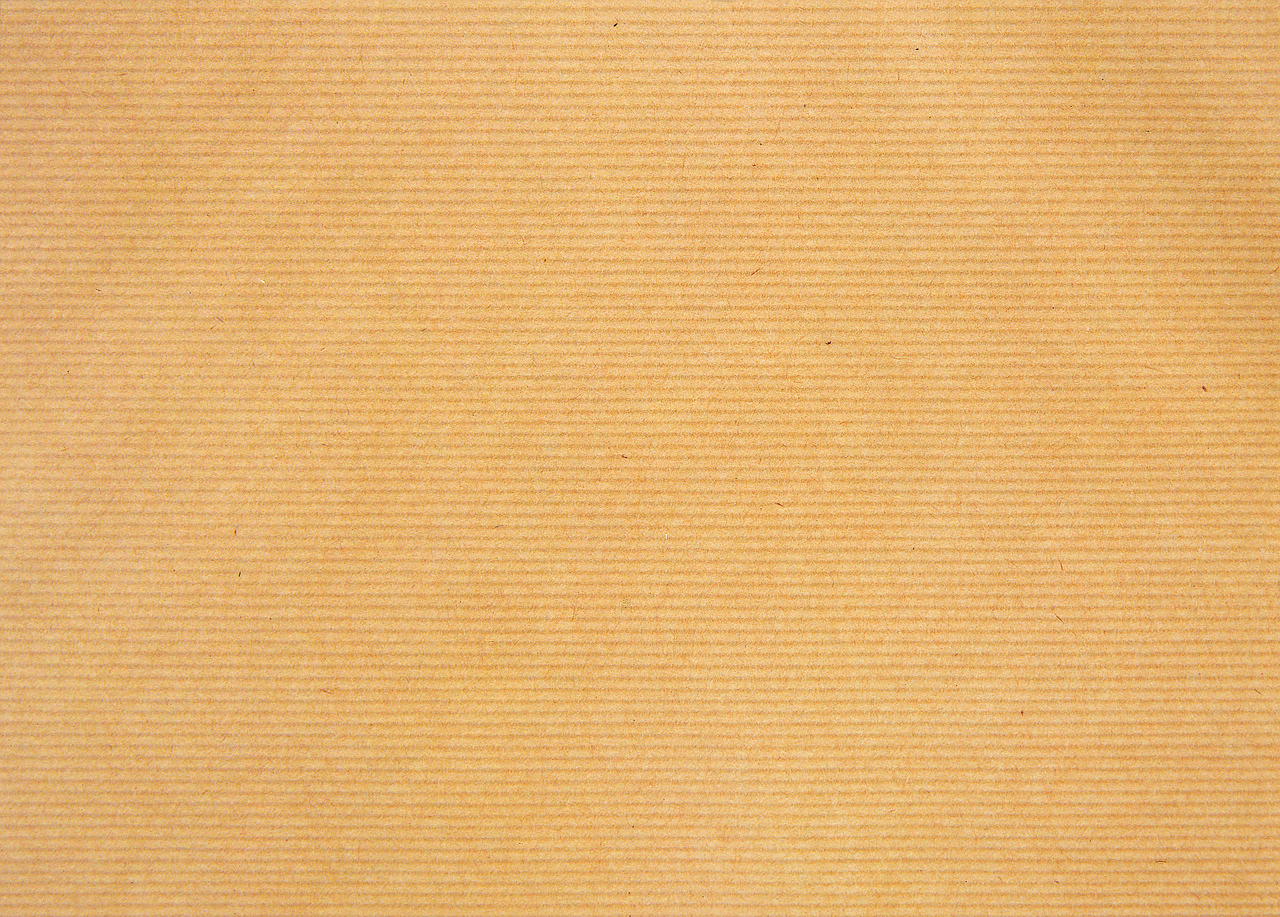
Community Recycling Programs
Community recycling programs are an essential part of promoting sustainable practices and enhancing environmental responsibility among residents. These initiatives not only facilitate the recycling process but also create a sense of community and shared purpose. Imagine living in a neighborhood where everyone actively participates in recycling efforts; it transforms waste management from a mundane task into a collaborative mission. Many communities have established programs that provide convenient drop-off locations, curbside pickup, and educational resources to help residents understand the importance of recycling.
One of the most significant advantages of community recycling programs is their ability to simplify the recycling process. For instance, local governments often set up designated recycling bins in public areas, making it easy for residents to dispose of recyclable materials without hassle. This convenience encourages more people to participate, as they can quickly drop off their items while running errands or enjoying a day out. Furthermore, many programs offer regular collection schedules, ensuring that residents know exactly when to put out their recyclables.
Additionally, community recycling programs often include educational components that inform residents about what can and cannot be recycled. This knowledge is crucial because contamination can significantly reduce the effectiveness of recycling efforts. For example, if non-recyclable materials are mixed in with paper products, the entire batch may be deemed unusable. To combat this issue, some communities host workshops, distribute flyers, and even use social media campaigns to engage residents and provide them with the necessary information. By fostering awareness and understanding, these programs empower individuals to make informed choices about their waste.
Moreover, community recycling programs can lead to significant environmental benefits. By increasing the volume of materials recycled, communities can reduce the amount of waste sent to landfills, conserve natural resources, and lower greenhouse gas emissions. According to a recent study, communities with active recycling programs have seen a reduction in landfill waste by up to 30%. This not only helps the environment but also saves municipalities money on waste disposal costs, which can be redirected to other community services.
In summary, community recycling programs play a pivotal role in promoting recycling and environmental stewardship. They provide a structured approach to waste management, educate residents about recycling practices, and contribute to a healthier planet. By participating in these initiatives, individuals can make a tangible difference in their communities and inspire others to do the same. So, the next time you see a recycling bin in your neighborhood, remember that it's more than just a container—it's a gateway to a sustainable future.
- What materials can typically be recycled in community programs? Most programs accept paper, cardboard, glass, aluminum, and certain plastics. Always check local guidelines!
- How can I find out about recycling programs in my area? You can visit your local government website or contact your waste management department for information on available programs.
- Are there any limits on how much I can recycle? Some programs may have restrictions on the amount of material you can place in curbside bins, so it's best to check the specific rules of your local program.
- What should I do if I have questions about recycling? Reach out to your community’s recycling program or local waste management authority for assistance.
Frequently Asked Questions
- Why is recycling paper important for the environment?
Recycling paper plays a crucial role in reducing landfill waste, conserving natural resources, and lowering greenhouse gas emissions. By recycling, we can significantly decrease the amount of trees cut down, reduce energy consumption, and minimize pollution associated with paper production. It's a simple yet effective way to contribute to a healthier planet!
- What are the security benefits of shredding paper?
Shredding paper is essential for protecting sensitive information, whether personal or corporate. By shredding documents, you prevent identity theft and ensure that confidential information does not fall into the wrong hands. It’s like putting your important secrets in a safe; it gives you peace of mind knowing that your data is secure!
- What types of shredders are available, and which one should I choose?
There are several types of shredders, including strip-cut, cross-cut, and micro-cut shredders. Strip-cut shredders are the most basic and fastest but offer the least security. Cross-cut shredders provide better protection by cutting paper into smaller pieces, while micro-cut shredders give the highest level of security by turning paper into tiny particles. Choosing the right shredder depends on your specific needs, such as the volume of paper and the level of security you require.
- How should I prepare paper for recycling?
To prepare paper for recycling, make sure to remove any non-paper materials, like plastic windows from envelopes and staples. Properly sorting and cleaning your paper products ensures a higher quality of recycled materials, which ultimately leads to better recycling outcomes. Think of it as prepping ingredients before cooking; the better your prep, the tastier the result!
- What can I do to participate in community recycling programs?
Many communities have recycling programs that make it easier for residents to recycle. You can participate by checking local resources to find out about drop-off locations or curbside pickup services. Getting involved not only enhances recycling efforts but also fosters a sense of community and shared responsibility for the environment. It’s all about coming together to make a difference!



















